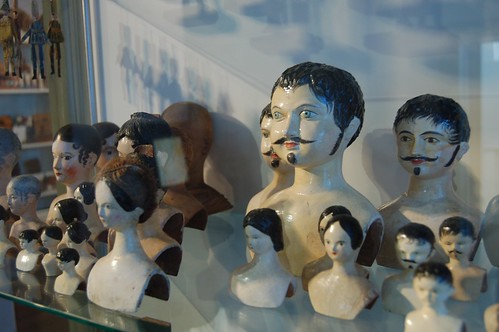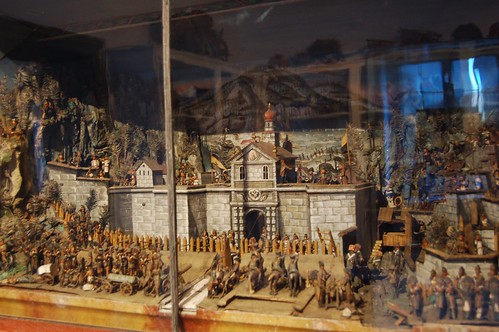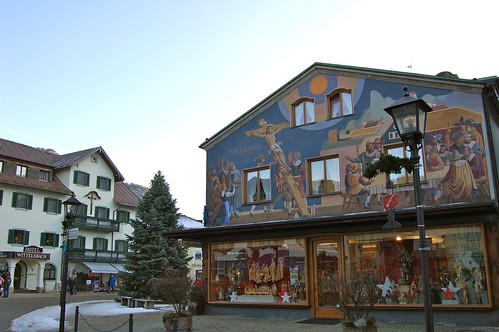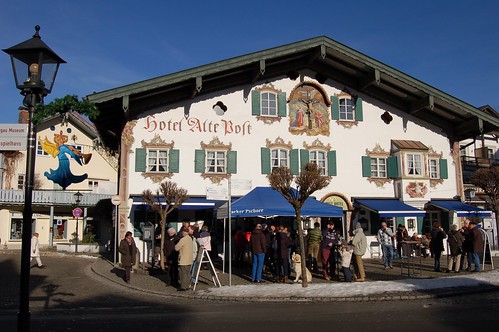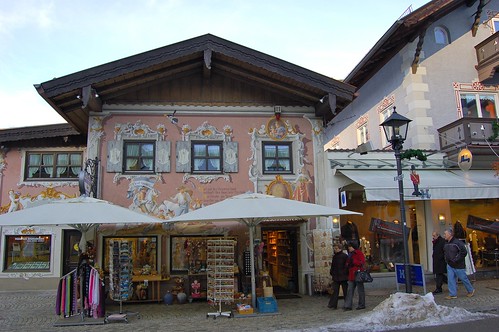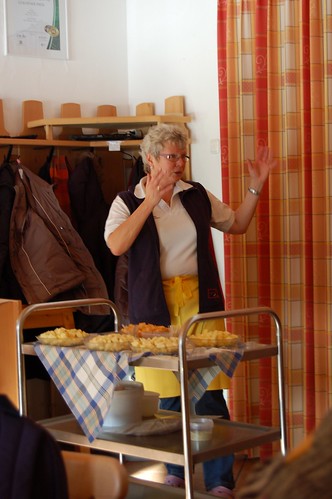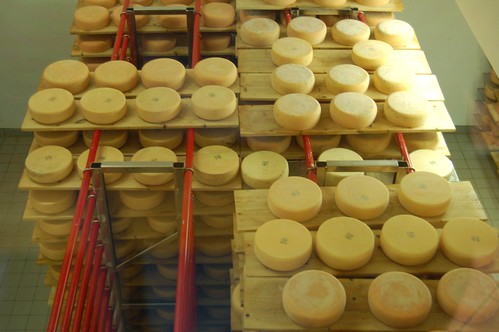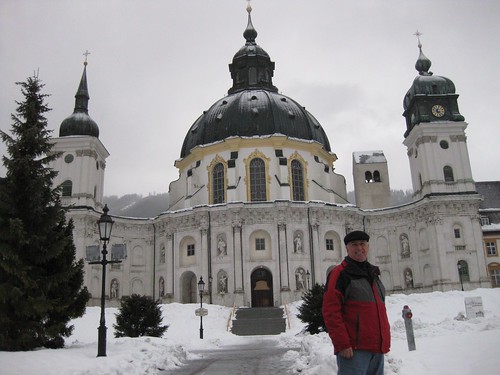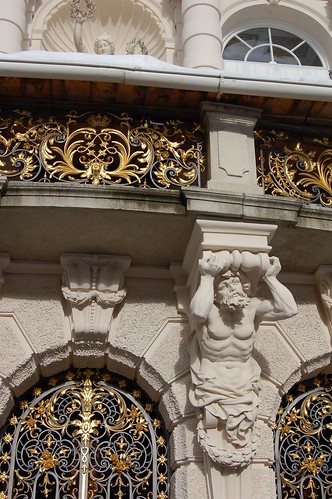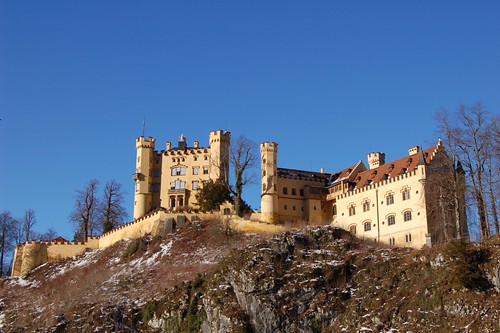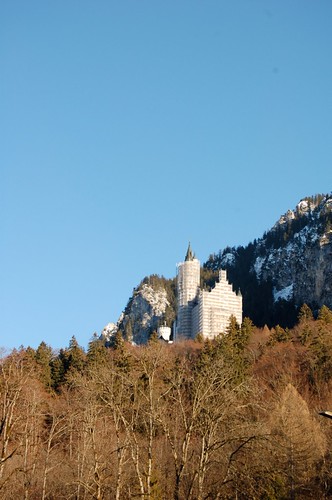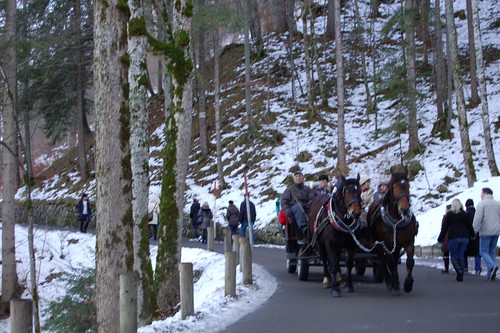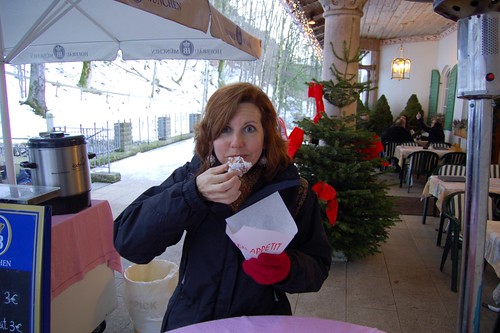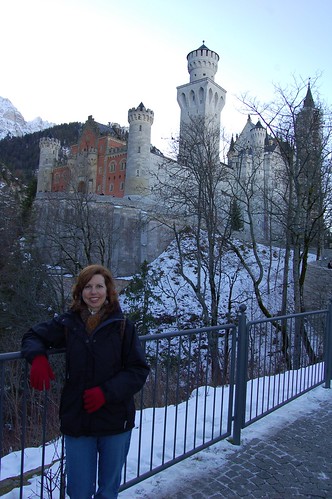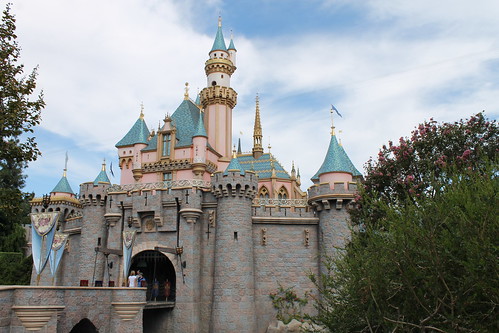As I mentioned in my story about Oberammergau, my mother’s 1984 visit to this village was much longer than she had intended. She wrote a comment to flesh out the details, but I thought it merited its own post. Look, Mom, you’re a blogger!
Betty Ann reminisces…
Leaving Garmisch on a warm April day with pillows, blankets and toys in the cargo area of the station wagon, Megan (4) and Katy (5) leaped over the back seat and settled in for another fun family trip. Destination: Neuschwanstein Castle. Grammy, Grampy, and family friend, Kurt, were three abreast in the seat behind us. The scenery was spectacular, but only a few miles of the winding mountain road resulted in Megan’s predictable car-sickness. “Just drop us off in Oberammergau,” I suggested to Paul. “You should be back in two hours, right?” So it seemed. I glanced at the clock on the dashboard – a little after 10. Shorts and light jackets were a poor choice for a village in the Alps; we needed to get inside. Shops were stocked with delicate wood carvings, so a café seemed to be a better choice. Warmed by mugs of hot chocolate, which also soothed Megan’s unsettled tummy, we walked to the Passion Play Theater to check July’s availability of tickets for traveling friends. With little discussion, protest or explanation, we were ushered to three empty seats in the open-air theater. Although a roof covered the seating area, birds were flying through on a cool breeze. A German lady, sitting two rows behind us, brought up her mink coat to lay over the girls bare legs. The lines of the play were, of course, spoken in German. As we were seated, I remember several men on the stage in costume; one of them was Judas. At noon, the building emptied as cast members and the audience alike left for lunch. Unbelievable… We didn’t return for the second half of the play as I expected Paul to be waiting for us at the designated corner. He wasn’t there. Back in the café , we managed to be seated at the table nearest the window, in full view of the street. There, we drank countless cups of hot chocolate and ate big plates of fries and apple strudel while, at the same time, worrying that Paul had been in an accident. How would I be contacted? German restaurants will let you sit for as long as you like; our fraulein didn’t seem at all annoyed that we had camped out at her table for three hours. At last, after hours of shared look-out duty, several trips to the potty, and unexpressed worry, our Ford station wagon pulled up to the curb. It was 4:20. If only someone had already invented the cell phone … would I have wished I had bought one?



